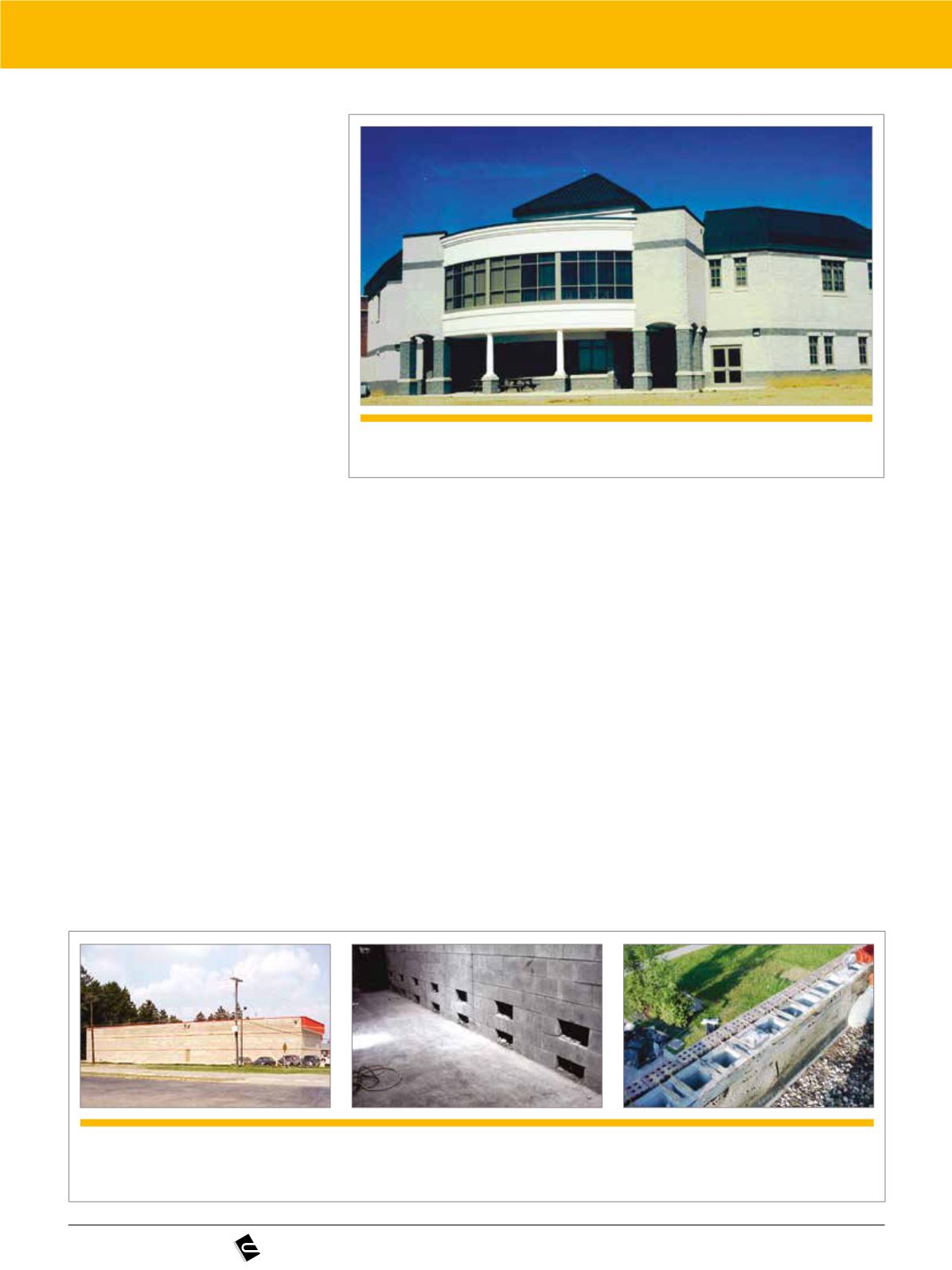
138 | CONCRETO & Construções
bars or strands. Laterally-restrained
tendons are generally preferred for
walls exposed to out-of-plane load-
ings because the walls have a bet-
ter flexural performance compared to
walls utilizing unrestrained tendons.
Figure 2 shows a school building
that was first designed using conven-
tional reinforced masonry and later
re-designed at the request of the
masonry contractor to use post-ten-
sioned masonry. The contractor was
a first-time user of post-tensioning
and found significant economy in the
construction from reduced grouting.
Based upon successes with new
construction, post-tensioning has
also been extended for use in rein-
forcing existing masonry walls for out-
of-plane loadings. Figure 3 shows a
building with concrete masonry (CMU)
structural walls and a clay brick ve-
neer that was strengthened using
post-tensioning to resist high winds.
In the design, it was decided to use
unbonded, laterally-unrestrained ten-
dons. They were placed into open
cells of the CMU through cuts made
into the CMU. The tendons were
placed in short sections, spliced, and
anchored top and bottom. This repair
process is well suited to one-story
buildings where there is access to
both the interior face of the walls and
the roof edge.
Most will recognize this last repair
method to be a variation on the center
core method. For that method, a core
hole is drilled from the top down into
the center of solid masonry. After-
ward, mild reinforcement is inserted
and grouted into the core to provided
added strength for out-of-plane and
possibly in-plane loads. However,
some creative engineers have also
used post-tensioning techniques with
the center core method with good
success. In the previous repair meth-
od, there was no need to drill a core
hole. Instead the contractors needed
to access the existing open cells of
the hollow masonry.
WALLS - IN-PLANE EFFECTS
Post-tensioned masonry shear
walls present an opportunity for more
research. Similar to conventionally re-
inforced masonry walls that are partially
grouted, post-tensioned masonry walls
have some challenges to be overcome.
Researchers do not yet fully agree on
the effects of partial grouting under
seismic loading on reinforced masonry.
Adding post-tensioning compounds
the shear problem associated with
partial grouting by adding compres-
sion and increasing toe pressures due
u
Figura 2
School with post-tensioned masonry walls
u
Figura 3
Existing building (a); Interior view of access ports for post-tensioning (b); top of wall anchor (c)
(Photographs: Scott Walkowicz, Walkowicz Engineers)


